Detailed introduction of Hungarian Dance Academy:
Introduction and Overview
Location: Located in Budapest, the capital of Hungary, the specific address is 87-89 Colomb Street.
Student size: It is a small-scale higher education institution with a student population of 500-999.
History and establishment time
The history of the Hungarian Dance Academy can be traced back to 1937, when the National Ballet Education Institution began to operate in the form of an organizational system at the Hungarian Royal Opera House. In 1949, it was merged with the School of Dance Art. In 1950, the Hungarian Royal Opera House and the National Ballet Academy merged to form the National Ballet School, which was later named the Hungarian Dance Academy in 1990.
School Strength
Teaching Staff: It has a team of experienced and professional teachers who not only have solid dance expertise, but also have rich teaching and performance experience. Many teachers are outstanding talents from the dance field at home and abroad, and can provide students with high-quality professional guidance.
Subjects and Majors: It provides preparatory courses, training courses, and undergraduate and master's degree courses, covering multiple professional directions such as ballet, folk dance, dance education, choreography, dance theory and dance history. The disciplines are comprehensive and can meet the learning needs of different students, and cultivate dance professionals with multiple talents, such as dance artists, choreographers, dance teachers, etc.
Teaching Achievements: As an important dance education institution in Hungary, it has cultivated many outstanding dance talents. They have demonstrated excellent skills and professional qualities on the dance stage at home and abroad, and have made important contributions to the development of dance art in Hungary and even the world. The students of the academy have won many awards in various international ballet competitions and festivals and have been widely praised.
Nature of the institution
A public non-profit higher education institution.
Educational philosophy
Committed to cultivating diversified dance talents with international vision and Hungarian cultural heritage, focusing on the combination of dance skills and theoretical knowledge, emphasizing the cultivation of students' abilities in performance, creation, education, etc., so that students can become dance artists, choreographers and dance teachers with solid professional foundation and innovative ability, so as to inherit and promote dance art and meet the society's demand for dance professionals.
Key disciplines and departments
Key disciplines: Ballet and folk dance are one of the key disciplines of the academy. It has a deep tradition and rich experience in teaching, training and research, and has cultivated many outstanding ballet and folk dance professionals. In addition, the dance education major has also attracted much attention, providing systematic theoretical and practical teaching for the training of dance educators.
Department settings: The college has not clearly divided the departments in the traditional sense, but from the perspective of course settings, teaching is mainly centered on different professional directions of dance art, including performance majors such as classical ballet artist training, folk dance artist training, and educational majors such as dance education, as well as theoretical majors such as dance theory and dance history education.
Ranking
Ranked 34th in the Hungarian university rankings released by the Global University Network (4ICU) in 2024, and ranked 8332nd in the world.
Expenses
Tuition fees: Undergraduate tuition fees are about 20,000-30,000 RMB per year, and the tuition fees for the master's degree in classical ballet are about 5,000 euros.
Accommodation fees: Dormitory fees are about 250-300 euros per month.
Other expenses: Other expenses such as textbook fees and living expenses must also be considered. The annual living expenses are about 4-5 About RMB 10,000 (including accommodation).
Campus
Campus facilities: The campus is equipped with professional dance classrooms, rehearsal halls and other teaching facilities, providing students with a good learning and training environment. At the same time, the school also has a library with a rich collection of dance professional books, journals, video materials, etc. to meet the students' learning and research needs. In addition, there are sports facilities for students to use to promote their all-round development.
Campus life: The school focuses on the comprehensive quality training of students. In addition to professional courses, it also organizes various cultural activities, academic lectures, dance performances, etc. to enrich students' campus life. Students have the opportunity to participate in dance exchange activities and competitions at home and abroad to broaden their horizons and improve their professional level and international communication ability. The school also has a dance elementary school and a dance high school on campus, forming a complete dance education system from elementary school to university, providing students with a coherent learning path and a good dance learning atmosphere.
-
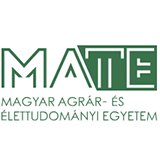
Hungarian University of Agriculture and Life Sciences
-
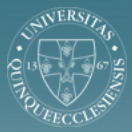
University of Pécs
-

Budapest University of Technology and Economics
-
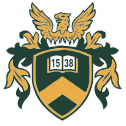
University of Debrecen
-
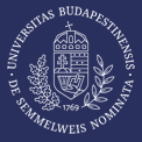
Semmelweis University
-

University of Pannonia
-
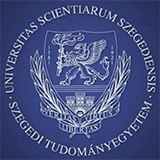
University of Szeged
-
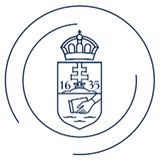
Eötvös Loránd University
-

University of Sopron
-
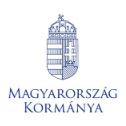
University of Miskolc
-

Mesoamerican University
-

Istmo University
-

Mariano Galvez University of Guatemala
-

Regional University of Guatemala
-

Galileo University
-

Francisco Marroquín University
-

Rafael Landívar University
-

University of the Valley of Guatemala
-

University of San Carlos of Guatemala
-

Technological Institute of Tlaxcala Plateau
-

Golfo University
-

Technological University of South Sonora
-

Technological University of Huejotzingo
-

Tizimín Institute of Technology
-

Chilpancingo Institute of Technology

